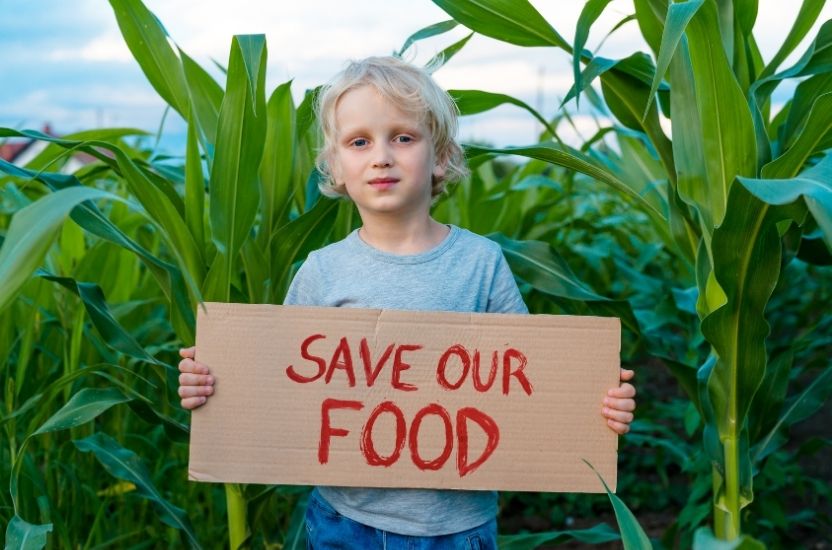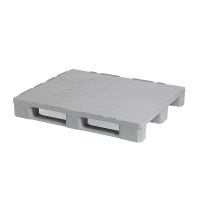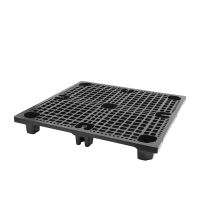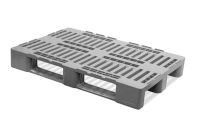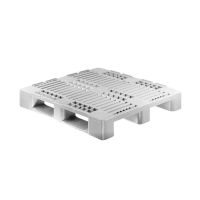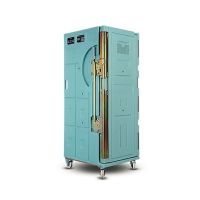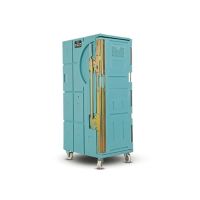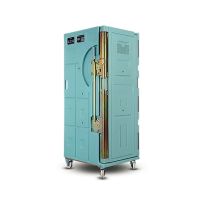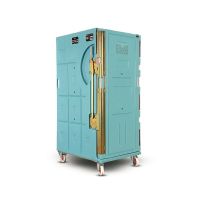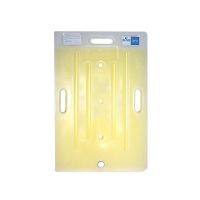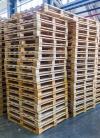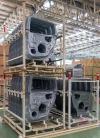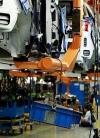The latest global food figures show that around 17% of the food available to consumers worldwide is wasted. There are more than 7 billion people on earth, of which 925 million suffer from malnutrition. The Food and Agriculture Organisation of the United Nations (FAO) estimates that around 1 300 million tonnes of food are wasted each year. This is enough to feed 3 billion people.1
The issue is even more urgent when considered alongside another UN study which tracks the problem further down the supply chain and shows that 14% of food production is lost before it even reaches your local supermarket.
Food waste is a growing problem. It is estimated that by 2030, total annual losses due to food waste could reach $1.5 trillion globally. Misuse of resources is one component of this problem. For example, when companies produce more than the demand they have, excess stocks could spoil before they have been sold.
Unfortunately, the process of food waste is already happening before products reach retailers or consumers due to inefficiencies in supply chains. Even if only a quarter of the food currently lost or wasted globally could be saved, it would be enough to feed 870 million hungry people worldwide.2
The impact of food waste on the environment
Carbon dioxide emissions produced by rotting waste are a major contributing factor of the climate problem. According to the Intergovernmental Panel on Climate Change, food waste and loss is responsible for as much as 10% of global emissions. Food loss and waste are responsible for about 4.4 gigatonnes of greenhouse gas (GHG) emissions per year contributing to global warming and climate change. This huge amount can be imagined in such a way that if food loss and waste were the sizes of a country, it would be the third-largest source of GHG emissions in the world - surpassed only by China and the United States.
Less food waste would lead to more efficient land use and improved water management, which would have a positive impact on climate and living conditions. Food that is never eaten must be regarded as a waste of resources such as land, water, energy, soil, seeds and other inputs used to produce it.3
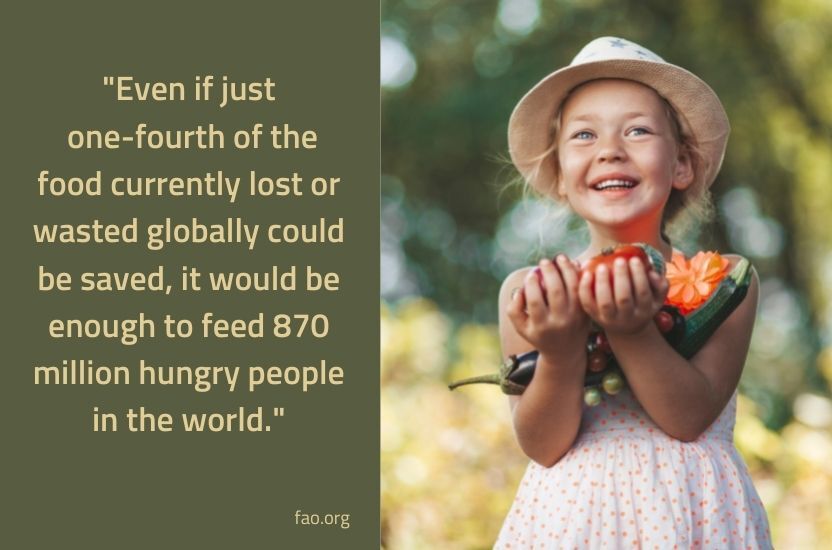
Main reasons for food waste
In middle- and high-income countries, food is wasted and lost mainly at the later stages of the supply chain. In contrast to the situation in developing countries, in industrialised countries consumer behaviour plays a huge role. Food is lost or wasted throughout the supply chain, from initial agricultural production to final household consumption. Misuse of resources is one part of the problem, for example, when manufacturers overproduce and have excess stocks that spoil before sale. However, much food spoils before products reach retailers or consumers due to inefficiencies in supply chains .
Food is wasted in many ways, here are some of them:
- Strict expiration dates on some foods force retailers to discard food that could easily be sold a day later or be given to homeless shelters for free instead the day of expiration.
- Disposal of unwanted products, also known as culling, involves removing diseased or affected plants from the distribution process.
- Lots of healthy, edible food is often unused and discarded from home kitchens and food service outlets.
In these factors, there is a noticeable lack of coordination between actors in supply chains. Raising awareness among industries, retailers and consumers is very important, as well as finding other beneficial uses for food that is currently discarded.
Proper management is vital in supply chains
We all know that optimal supply chain management is essential to commercial processes, especially in the food industry. The role of the supply chain is not only to guarantee the safe flow of goods, but also to take into account other factors such as the quality of storage, packaging, transport and preservation. The logistics industry is trying to solve this problem with various technological innovations and process optimisations that enable faster movement from production site to retail outlets.
Optimised food logistics, is key in reducing food waste. To make changes you need to analyse some key issues:
- .
- Which point in the supply chain has the highest amount of spoiled products?
- How to increase efficiency using specific packaging or new solutions?
- How to reprioritise productivity so that waste reduction is key?
- What contingency solutions can be used to reduce waste, e.g. reducing prices for short-dated products at retail level
Considering that many sectors are involved in and responsible for the problem of food waste, properly optimised logistics actively contribute to waste reduction.
How to reduce food waste in the supply chain?
To ensure food quality is not compromised, it is extremely important to maintain a range of recommended temperatures for food. Keeping up to date with innovations and trends in the supply chain can help reduce both product damage and waste. In addition to transportation, the moment of handling is extremely important and should be kept to a minimum.
What else to consider when optimising your supply chain?
#1 Record keeping and product visibility
Product recordkeeping and visibility is of paramount importance in supply chains, as exposure of product to sudden changes in temperature, light, pressure etc. can have a negative impact on food quality. Nowadays, logistics managers can record the temperature and handling of their products using specific software.
This can eliminate many problems at earlier stages and keep track of expiration dates, temperature and humidity. This is particularly useful in cold chain management, which requires products to be kept at consistently low temperatures.
#2 Packaging workflow management is about tracking not just the goods, but also the carriers
For food and beverage retailers, as well as their suppliers, gaining insight into the supply chain can help them make better decisions in many areas, including load and route planning. For example, if a company is working with its product in a pooling, or packaging workflow, it can use integrated packaging management system and track where its pallets, containers, or roll containers of goods are. Using technology that links customer data to provide a realtime picture of operations significantly improves efficiency and streamlines delivery.
#3 Temperature monitoring
The shelf life of food depends on temperature and transport conditions. Manufacturers generally specify the exact temperatures to be maintained during transport to limit the growth and spread of dangerous bacteria such as E. coli and salmonella. If a constant, safe temperature is not maintained throughout the supply chain, these products might spoil, pose a risk to consumers and will need to be disposed of. Therefore, temperatures should be monitored during transport to ensure compliance. This includes the use of appropriate carriers to keep the product at a low temperature during transport.
Isothermal roll containers are a way to maintain constant temperature
Isotherm roll containers are specialised rollcontainers with a specific casing made of EDPM material. This is ideal to transport food products that have to maintain a certain temperature. Their main principle of operation is to insulate food (with cooling elements inside the container) from heat outside.
Once loaded with doors closed, the refrigerated roll container maintains the temperature for a predetermined period of time, which includes not only the time of transport but also waiting for unloading, so that the food will not be damaged even at critical moments. Isotherm roll containers are the primary carrier for refrigerated transport from distribution centres to points of sale.#4 Flexible approach and packaging carrier upgrades
With a flexible supply chain there is greater opportunity to adapt operations to changes in the market. In the food and beverage industry, especially in the cold chain, time-sensitive deliveries, shorter supply chains and product life cycles require companies to be able to adapt quickly to emerging changes. An analysis of the situation may prompt the appointment of long-term adjustments to material or information flows to reduce environmental impact. This may involve the entire supply chain, e.g. entering into pooling of packaging using a fixed type of carrier, or even changing single-use carriers such as wooden pallets to H1 hygienic pallets specially adapted to the food industry.
.When it comes to warehouse management systems, many companies use the FEFO (First Expired, First Out) system, which means that the first products to leave the warehouse are those with the earliest expiry date. Although each company decides to adopt a flow system according to its own needs, the goal of modern supply management is to ship the right amount of products instead of overstocking to avoid waste.
Rental service as a support for food industry
To help companies achieve the greatest possible flexibility, we have introduced the packaging rental service such as pallets, containers, or refrigerated containers. This makes it easier to cope with surges in demand such as seasonal demand, weather disruptions or overproduction without immediately entering into the large costs of purchasing new carriers. We provide a durable and reliable packaging pool to help companies reduce food waste in their supply chain.
Continuously making small changes can make big improvements.
For food supply chains that handle huge volumes of food, even a small disruption can turn into a major problem. That's why it makes sense to analyse your deliveries to eliminate interruptions, bottlenecks and packaging and equipment failures that can lead to wasted quantities of produce. Continually making small changes can pay big dividends.
Your business can start by improving the ability to track product loads using supply chain software and replacing disposable pallets with more hygienic plastic pallets, or handling in isothermal roll containers. These improvements play a key role in reducing food waste in the supply chain, ensuring food products arrive safely at the right place at the right time.
For more information on pooling and packaging rental contact us and we will match you with the best solution for your processes.
If you are interested in the topic of the role of the cold chain, you can take a look at some other articles on our blog:
- How safe is your cold product supply chain? Find out 7 important facts
- 5 trends that will affect your supply chain in 2021
- Adapt packaging to your production and supply chain
Sources::
1 Unep.org
2 SupplChainBrain.com
3 stopwastingfoodmovement.org


